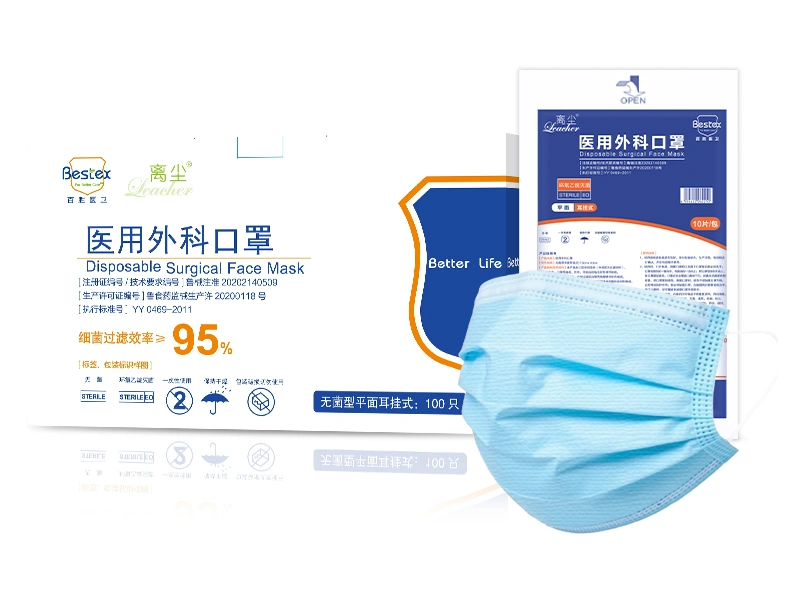The protective effect and wearing duration of medical surgical masks mainly depend on the usage environment, personal habits and the condition of the mask. Under normal circumstances, it is recommended that the mask be used continuously for no more than 4 hours at a time. If the mask is damp, damaged or contaminated (such as in contact with patient secretions), it should be replaced immediately. Reuse should be done with caution and only if it is uncontaminated and properly stored.

I. Factors Affecting Usage Time
1.Environmental humidity and activity intensity:
Breathing, speaking or engaging in vigorous activities can increase the humidity inside the mask, leading to a decline in the electrostatic adsorption capacity of the filter layer and a weakened protective effect. If it is obviously damp, it needs to be replaced in time. Exposure to contamination risk
2.Risk of exposure to contamination:
In high-risk environments such as hospitals and confined Spaces, masks may be contaminated by droplets or aerosols more quickly. It is recommended to strictly follow the 4-hour replacement standard. In ordinary outdoor or well-ventilated scenarios, the duration can be appropriately extended, but the condition of the mask needs to be observed.
3. Mask fit:
If the mask deforms, the nose clip becomes loose or there is a gap with the face, it should be replaced even if the time limit has not been reached; otherwise, it may lose its protective function.
II. How to determine if replacement is needed
Visual inspection
If you find that the inner side of the mask is obviously moist, the surface is stained or secreted, or the breathing resistance has significantly increased (indicating that the filter layer is clogged), you should replace it immediately.
Touch behavior
If your hands frequently touch the outside of the mask (such as when adjusting its position), it may increase the risk of contamination. It is recommended to shorten the usage time.
III. Precautions for Reuse
application condition
For personal use only, and free from contamination, moisture and obvious damage. Do not re-enter high-risk places (such as hospitals).
preservation method
After removal, hang it in a clean, dry and well-ventilated place, avoiding folding and squeezing. It can be placed in a breathable paper bag. Do not seal it in a plastic bag (as it is easy to breed bacteria). Avoid contact with other items to prevent secondary pollution.
Disinfection risk
Alcohol spraying, high-temperature steaming and other processes can damage the structure of masks and reduce their protective performance. It is not recommended to disinfect them by yourself and reuse them.
IV. Handling of Special Scenarios
Briefly remove or put on a mask (such as when drinking water)
It can be stored for a short time, but make sure the inner side has not come into contact with external contaminants and avoid touching the outer layer when putting it on or off.
Children or special groups
Children have a high breathing rate and their masks are prone to getting damp. It is recommended to shorten the replacement time. Patients with respiratory diseases should prioritize ensuring comfort if they feel suffocated.
V. Misunderstandings about Extending Usage Time
Wrong practice
Placing tissues, gauze, etc. on the inner side of the mask may damage the fit. Wearing multiple layers of masks on top of each other actually increases the burden on breathing and the risk of contamination.
Correct principle
With protective effect as the core, the duration can be flexibly adjusted, and priority should be given to ensuring that the mask is dry and clean.
Summary
The "lifespan" of medical surgical masks is not fixed and needs to be determined based on a comprehensive consideration of the environment, usage habits and protective requirements. Timely replacement is more important than calculating the time, especially in high-risk places such as medical institutions and public transportation. It is essential to strictly follow the regulations to ensure the effective prevention of pathogen transmission.


 15-Aug--2025
15-Aug--2025